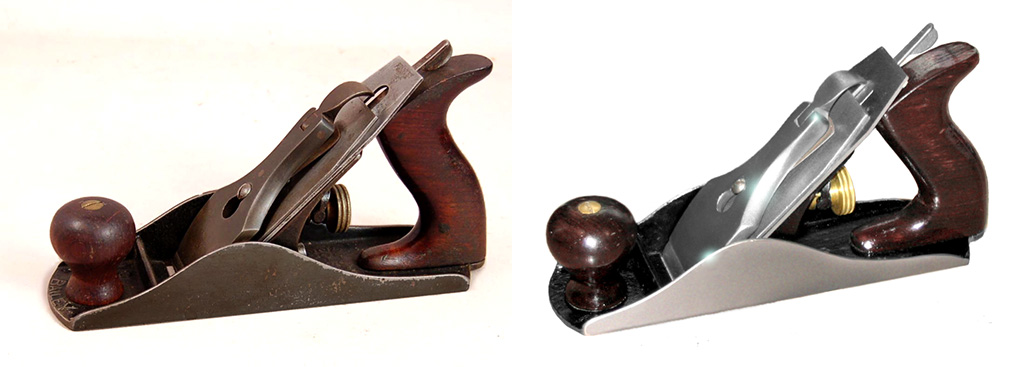LancsRick
Established Member
I'm having some fun restoring some planes, but one think I'm not certain on is the bare metalwork, i.e. the outer sides of the bed itself. To be clear, it's all perfectly flat, so getting it flat isn't an issue here.
The surface has the usual coating of dull grey aged metal, with some marks where surface rust has now been removed. I'm uncertain whether to wire brush the whole thing back to "shiny" and then wax up, or whether I'm taking things too far - I assume planes have always had a "bright" finish and therefore this is indeed corrosion/dirt.
Wire wool hasn't touched it, neither has an encounter with some metal polish, so being realistic I think it'd be a proper wire brush encounter. Then lots of wiping down with WD40 to get rid of all the particles! Finally some wax.
I know I'm not the first to restore planes like this, so any favourite tips from people?
Thanks.
The surface has the usual coating of dull grey aged metal, with some marks where surface rust has now been removed. I'm uncertain whether to wire brush the whole thing back to "shiny" and then wax up, or whether I'm taking things too far - I assume planes have always had a "bright" finish and therefore this is indeed corrosion/dirt.
Wire wool hasn't touched it, neither has an encounter with some metal polish, so being realistic I think it'd be a proper wire brush encounter. Then lots of wiping down with WD40 to get rid of all the particles! Finally some wax.
I know I'm not the first to restore planes like this, so any favourite tips from people?
Thanks.





